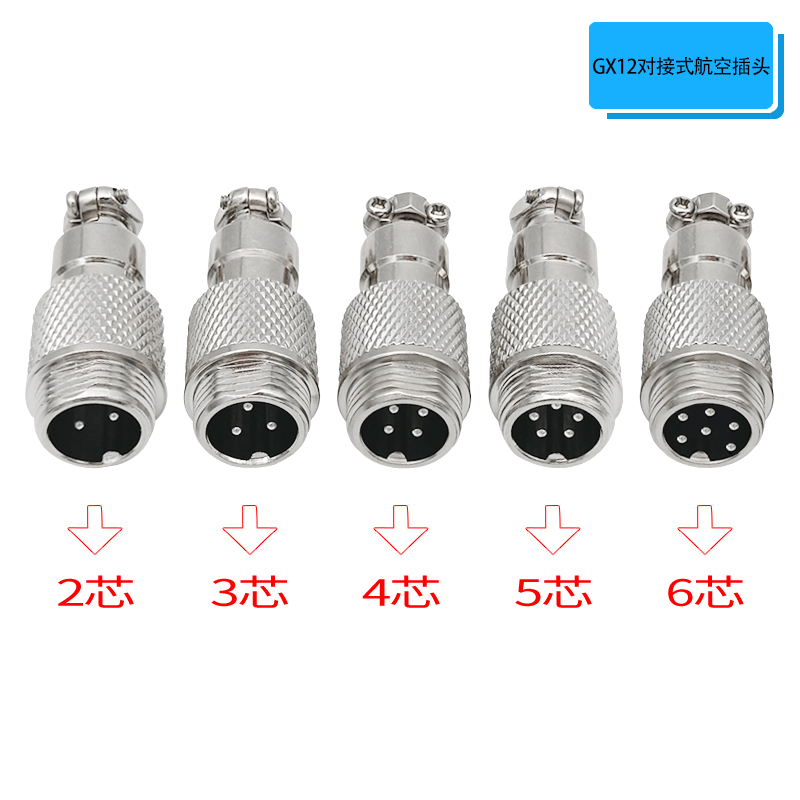Panel-mount aviation plugs (also commonly known as panel-mount aviation connectors or circular connectors) are electrical connectors installed on the panel, cabinet, or chassis of equipment. Characterized by rear-side wiring and front-side mating, they feature a robust housing, a secure locking mechanism, and excellent protective properties (against dust, water, and shock).
Their core value lies in providing equipment with a standardized, highly reliable, and quick-connect/disconnect electrical interface.
Here are their specific practical applications across various industries:
1. Industrial Automation & Control Systems
This is the most widespread application area.
Industrial Robots: Used to connect the robot arm to the control cabinet. Power lines, encoder signals, and sensor signals are consolidated through panel sockets, facilitating robot movement, maintenance, and replacement.
PLCs (Programmable Logic Controllers): Mounted on the panel of a PLC control box to connect external devices like sensors, push buttons, indicator lights, and solenoid valves. This organizes field wiring and allows for maintenance by simply unplugging without opening the control box.
Servo Drives & Frequency Inverters: Serve as the interface for power input, motor output, brake, and encoder feedback.
CNC Machine Tools: Connect the main machine body to the operator panel, peripheral cooling systems, and tool changers, ensuring reliable operation in oily and high-vibration environments.
2. Rail Transportation
In trains, high-speed rail, and subways, reliability and safety are paramount.
Inter-car Equipment Connection: Link control signals, communication networks, and power between carriages.
Equipment Enclosures: Act as external electrical interfaces for various control and power boxes located under the carriage, facilitating ground-level inspection and testing.
Passenger Information Systems (PIS): Connect displays, public address systems, and passenger information screens.
3. New Energy Sector
Photovoltaic Inverters: Mounted on the inverter panel for connecting the DC input from solar arrays and the AC output to the grid. They must withstand harsh outdoor conditions like sun and rain.
Wind Power Generation: Used in the nacelle and tower control cabinets of wind turbines to connect the pitch system, yaw system, generator, and sensors. They require high resistance to vibration and extreme temperatures.
EV Charging Stations: High-current capacity panel-mount aviation plugs are sometimes used inside DC fast-charging piles to connect internal power modules.
4. Military, Aerospace & Defense
Despite the name "aviation," they are not exclusive to aircraft. However, they are indispensable in these fields.
Ground Support Equipment (GSE): Connect aircraft/missiles to ground test equipment, power carts, and start-up units. They demand quick coupling, anti-mismating, and ultra-high reliability.
Military Electronic Shelves/Racks: Serve as standard equipment interfaces in communication, radar, and command vehicles/shelters, enabling rapid deployment and connectivity.
5. Marine & Offshore Applications
Marine Equipment: Connect navigation devices (radar, GPS), communication systems, and control equipment. They must possess excellent resistance to salt spray corrosion.
6. Test & Measurement Equipment
High-End Test Instruments: Equipment like spectrum analyzers and network analyzers often feature panel-mounted aviation sockets as calibration ports or for external trigger/reference clock input/output.
Automated Test Benches: The test bench is equipped with panel sockets, and the Unit Under Test (e.g., a circuit board) connects via a cable with a plug, enabling rapid changeover for testing.
7. Outdoor & Harsh Environment Equipment
Outdoor LED Displays: Connect display modules and control systems, requiring high Ingress Protection (IP) ratings like IP67.
Stage Lighting & Audio Equipment: Used for connecting high-power lights and speakers, requiring secure locking and high current-carrying capacity.
Summary: Core Advantages of Panel-Mount Aviation Plugs
From their wide-ranging applications, we can summarize their key advantages:
High Reliability & Durability: Metal housing, quality seals, and robust locking mechanisms withstand vibration, shock, and harsh environments.
Excellent Protection: Typically feature IP65, IP67, or higher ratings, effectively preventing dust and water ingress.
Quick Connection/Disconnection: Bayonet or threaded locking mechanisms enable simple and fast operation, significantly improving deployment and maintenance efficiency.
Anti-Mismating Design: Keying and variations in pin number/size prevent incorrect mating and potential equipment damage.
High Contact Density: Provide multiple pins in a compact panel space for transmitting power, signal, data, and even fiber optics.
Standardization & Modularity: Facilitate standardized equipment interface design, benefiting both manufacturing and maintenance.



